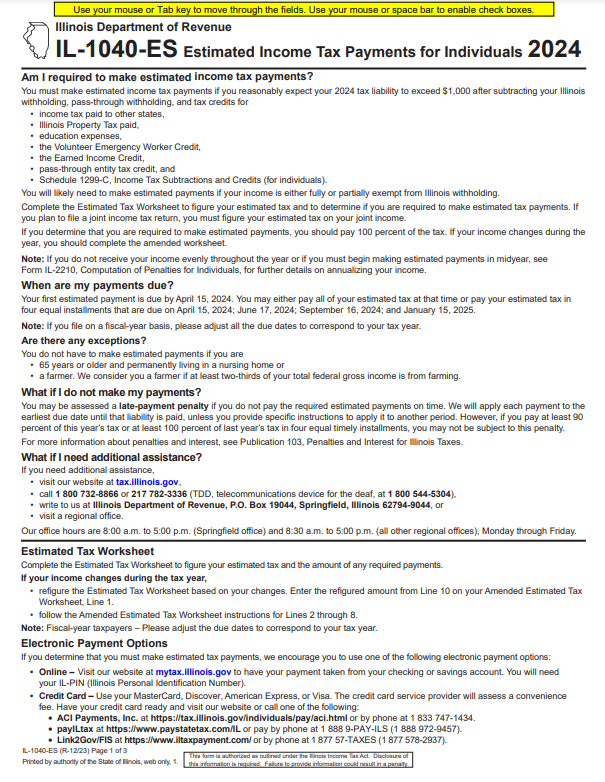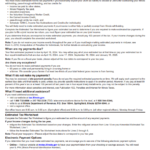Navigating property taxes can be daunting, especially when you’re dealing with the specifics of Illinois’s system. This guide aims to demystify the Illinois property tax return process, ensuring you understand everything from how taxes are calculated to filing your returns efficiently. Understanding property taxes is crucial for every homeowner, as it directly impacts your finances and property management.
What is a Property Tax?
Definition of Property Tax
Property tax is a levy imposed by the government on the ownership of real estate. This tax is calculated based on the assessed value of the property, which includes both the land and any structures on it. Property taxes are a critical source of funding for local governments and are used to support a variety of public services.
Purpose of Property Tax
The primary purpose of property tax is to generate revenue for local governments. This revenue is essential for funding a wide range of public services, including:
- Education: Funding for public schools and educational programs.
- Infrastructure: Maintenance and development of roads, bridges, and public buildings.
- Emergency Services: Support for police, fire departments, and emergency medical services.
- Public Health: Services and facilities related to public health and sanitation.
- Libraries and Recreational Facilities: Funding for public libraries, parks, and recreational programs.
Property Tax in Illinois
In Illinois, property tax is a key source of funding for local governments and is used to support community needs. Here are some specifics regarding property taxes in Illinois:
- Assessment: Property in Illinois is assessed by local county assessors. The assessment is based on the property’s market value, which is determined by factors such as location, size, and condition.
- Rates: The tax rate applied to the assessed value of the property varies by location. Each taxing district (e.g., counties, municipalities, school districts) sets its own rate based on budgetary needs.
- Billing and Payment: Property tax bills are typically issued annually. In most counties, property taxes are paid in two installments.
- Exemptions and Relief: Illinois offers various exemptions and relief programs to reduce the property tax burden for eligible homeowners, such as the General Homestead Exemption, Senior Citizens Homestead Exemption, and the Disabled Veterans’ Exemption.
Understanding how property tax works and its importance can help property owners in Illinois better manage their finances and ensure they comply with local tax laws.
Illinois Property Tax System
The Illinois property tax system is intricate and managed primarily at the county level. The system involves several key players and processes, including property assessors, local taxing authorities, and the Illinois Department of Revenue.
Key Features and Components
1. Assessment Process
- County Assessors: Each county has an assessor responsible for determining the market value of properties within their jurisdiction. Assessors use various methods such as market data, property characteristics, and sales comparisons to appraise property values.
- Reassessment Cycles: Properties are reassessed periodically, typically every three years, though this can vary by county.
- Assessment Notices: Property owners receive assessment notices informing them of their property’s assessed value. They can appeal the assessment if they believe it is inaccurate.
2. Equalization
- Purpose: Equalization ensures that property assessments are consistent across counties. The goal is to achieve a uniform assessment level statewide.
- Equalization Factor: The Illinois Department of Revenue applies an equalization factor (also known as the multiplier) to adjust the assessed values to a standard level of 33 1/3% of fair market value.
- County Multipliers: Each county may have its own multiplier, which is adjusted annually to reflect changes in the market and assessment practices.
3. Tax Rates
- Local Taxing Authorities: Tax rates are set by local taxing bodies, such as school districts, municipalities, and special service districts. These rates are determined based on the revenue needs of each taxing authority.
- Levy Process: Each taxing body determines its required revenue through a levy, which is then divided by the total assessed value of all properties in the jurisdiction to establish the tax rate.
- Composite Rate: The total property tax rate for a property is a composite of all applicable local tax rates.
4. Tax Bill Calculation
- Taxable Value: The assessed value of a property is multiplied by the equalization factor to get the equalized assessed value (EAV).
- Exemptions: Various exemptions can reduce the EAV, such as the General Homestead Exemption, Senior Citizens Homestead Exemption, and others.
- Final Tax Bill: The EAV, after exemptions, is multiplied by the composite tax rate to determine the final tax bill.
How Property Taxes are Calculated in Illinois
Here’s a detailed explanation of how property taxes are calculated in Illinois for an Illinois Property Tax Return, covering the assessment process, the equalization factor, and tax rates and multipliers:
1. Assessment Process
The assessment process is the first step in calculating property taxes. Here’s how it works:
- Market Value Determination: The assessor evaluates the market value of your property, which is the amount it would sell for in an open market.
- Assessment Ratio: In Illinois, the assessed value is a percentage of the market value. For residential properties, the assessment ratio is typically 33.33% of the market value.
- Methods of Valuation: Assessors may use different methods to determine market value, such as:
2. Equalization Factor
To ensure fair and uniform property assessments across different counties, Illinois applies an equalization factor (also known as a multiplier). Here’s how it functions:
- Purpose: The equalization factor adjusts the assessed values so that they are consistent across the state.
- Application: The Illinois Department of Revenue determines the equalization factor annually. Each county’s assessed values are multiplied by this factor.
- Example: If a property in a county is assessed at $100,000 and the equalization factor for that year is 1.05, the adjusted assessed value becomes $105,000.
3. Tax Rates and Multipliers
The final step in calculating property taxes involves applying tax rates and multipliers:
- Tax Rates: Local taxing districts, such as school districts, municipalities, and other local entities, determine the tax rates. These rates are expressed as a percentage of the assessed value.
- Multipliers: These are applied to ensure the correct amount of taxes is levied. Each taxing district sets its own rate, which can vary significantly based on the location and the needs of the district.
- Calculation: The property tax bill is calculated by multiplying the assessed value (after applying the equalization factor) by the combined tax rate of all applicable taxing districts.
- Example: If the adjusted assessed value is $105,000 and the combined tax rate is 7%, the property tax owed would be $105,000 * 0.07 = $7,350.
Putting It All Together
To summarize, the property tax calculation process in Illinois involves:
- Assessing the Property: Determining the market value and then the assessed value (usually 33.33% of market value for residential properties).
- Applying the Equalization Factor: Adjusting the assessed value to ensure uniformity across the state.
- Multiplying by Tax Rates: Applying the local tax rates to the adjusted assessed value to determine the final property tax owed.
This process ensures that property taxes are calculated fairly and consistently throughout Illinois, taking into account the varying needs and tax rates of different local taxing districts.
Filing Your Illinois Property Tax Return
Necessary Documentation
When filing your property tax return, gather documents like your tax bill, proof of ownership, and any exemption certificates.
Step-by-Step Filing Process
- Review your assessment notice.
- Gather necessary documentation.
- Complete the property tax return form.
- Submit the form and documentation by the deadline.
Common Mistakes to Avoid
Avoid errors like incorrect property details or missing deadlines. Double-check all information before submission.
Online Property Tax Payment Options
Paying your property taxes online in Illinois is a convenient and secure way to manage your tax obligations. Here are the steps and benefits of using online payment methods.
How to Pay Property Taxes Online
Visit Your County’s Treasurer Website:
- Each county in Illinois has its own treasurer’s website where you can pay property taxes.
- Use a search engine to find your county’s treasurer site, or visit the Illinois Department of Revenue’s website for links to county treasurer pages.
Enter Your Property Information:
- On the treasurer’s website, look for the property tax payment section.
- You will need to enter your property information, such as your Property Index Number (PIN) or property address, to access your tax bill.
Follow the Payment Instructions:
- Once you have accessed your tax bill, follow the instructions to make an online payment.
- You can typically pay using a bank account (ACH), credit card, or debit card.
- Be aware of any service fees that may apply, especially for credit card payments.
Benefits of Online Payments
- Convenience: Pay your property taxes from anywhere with internet access, at any time of day.
- Security: Online payments reduce the risk of mail delays or lost checks.
- Instant Confirmation: Receive immediate confirmation of your payment, providing peace of mind and proof of payment.
- Timeliness: Reduce the risk of late payments and associated penalties.
Security Measures
When making online payments, it’s crucial to ensure your transaction is secure:
Secure Website:
- Ensure the payment website uses HTTPS (look for a padlock icon in the address bar).
- HTTPS indicates the website has an SSL certificate, which encrypts your data during transmission.
Strong Passwords:
- Use a strong, unique password for your online account.
- Avoid using easily guessable information, and consider using a password manager to keep track of your passwords.
Confidential Information:
- Keep your payment information confidential.
- Avoid sharing your bank account or credit card details over email or unsecured channels.
By following these steps and precautions, you can effectively manage your property tax payments online, ensuring convenience and security.
Conclusion
Understanding and managing your Illinois property tax return doesn’t have to be overwhelming. By familiarizing yourself with the system, knowing how taxes are calculated, and taking advantage of available exemptions, you can navigate this process smoothly and efficiently. Stay informed and proactive to ensure you meet all requirements and minimize your tax burden.
Download Illinois Property Tax Return
FAQs
- What is the property tax rate in Illinois?
- The property tax rate varies by county and local taxing district. Check with your county assessor for specific rates.
- How can I reduce my property tax bill?
- You can reduce your property tax bill by applying for exemptions, appealing over-assessments, and ensuring your property details are accurate.
- What happens if I miss a property tax payment?
- Missing a property tax payment results in penalties and interest charges. Continued non-payment can lead to a tax lien on your property.
- Can I pay my property taxes in installments?
- Some counties offer installment payment plans. Contact your county treasurer’s office to inquire about available options.
- Where can I find more information about Illinois property taxes?
- For more information, visit your county assessor’s website or the Illinois Department of Revenue website.

